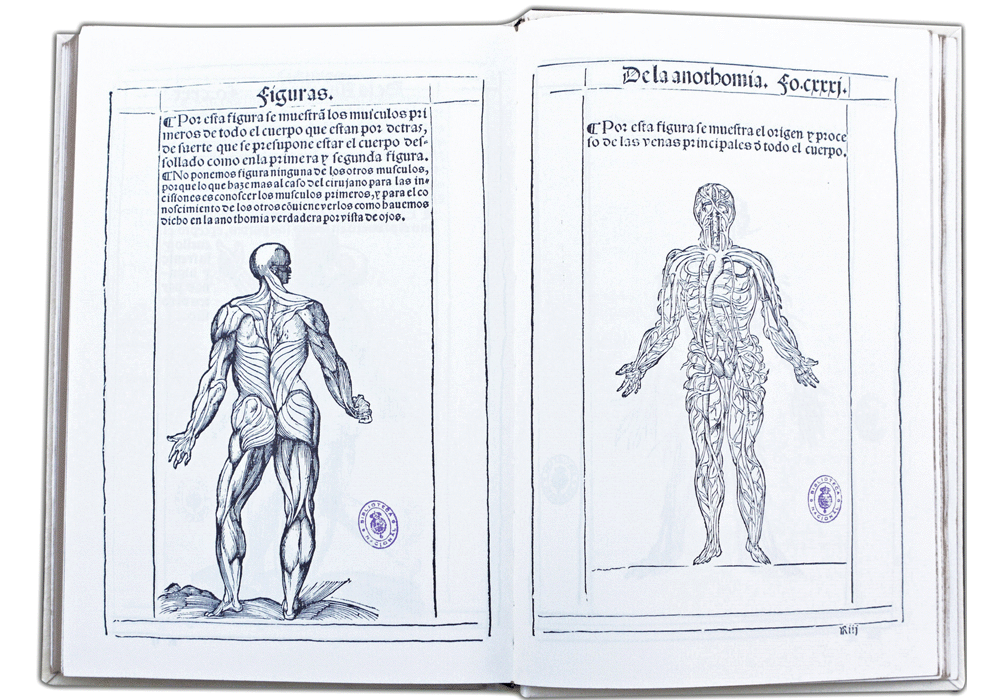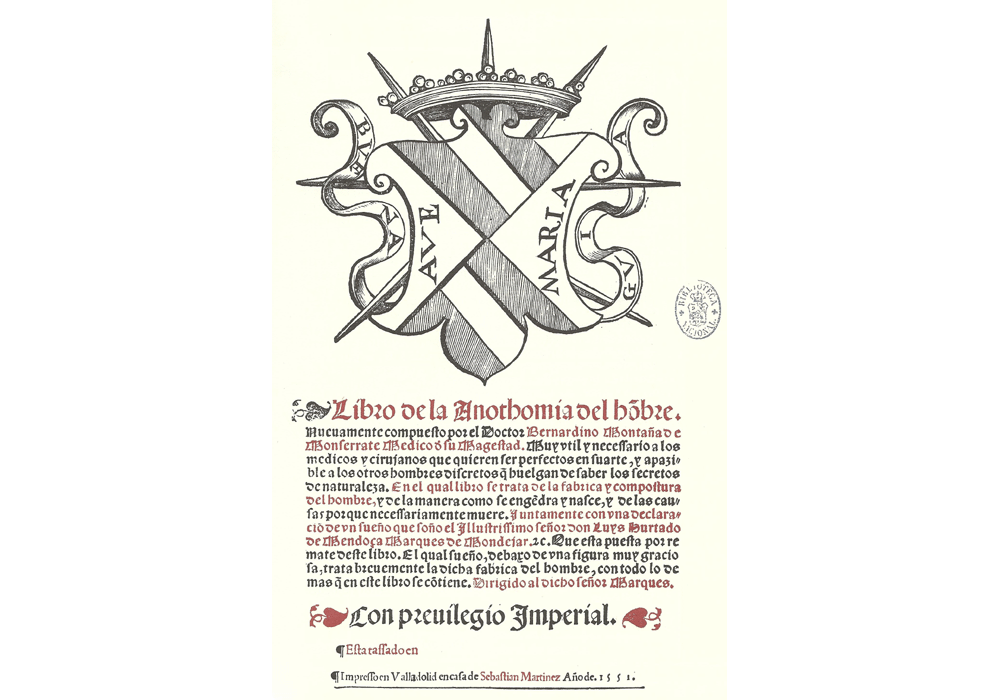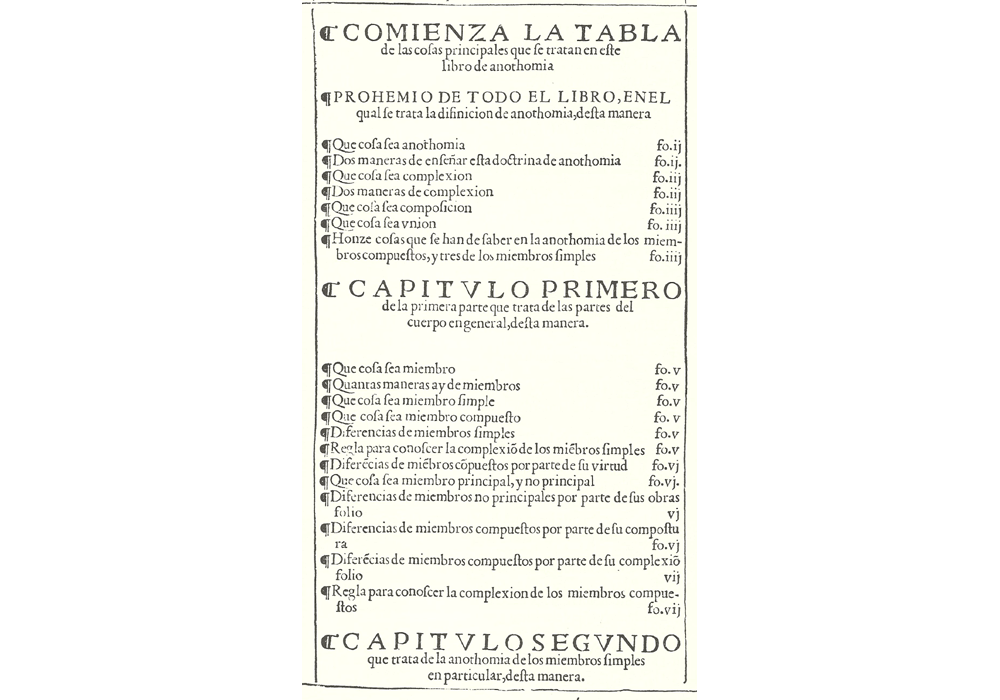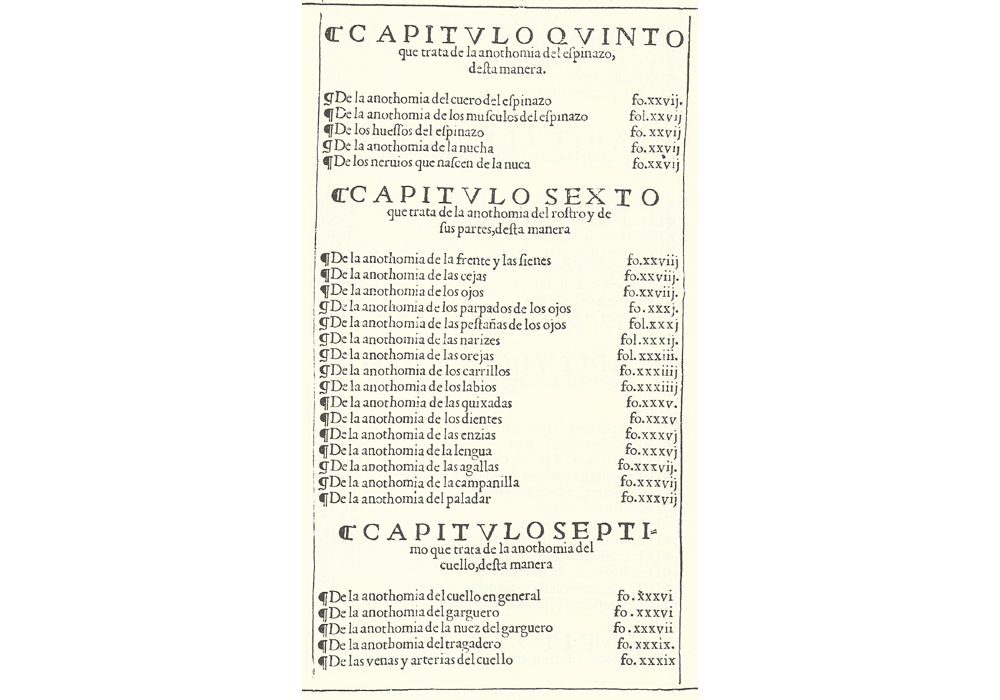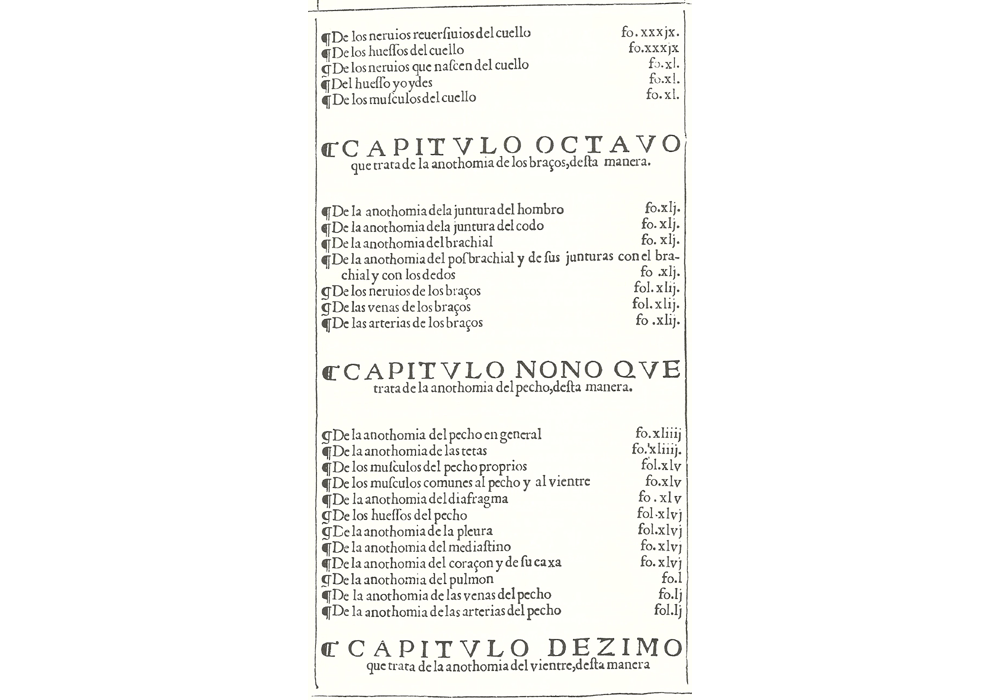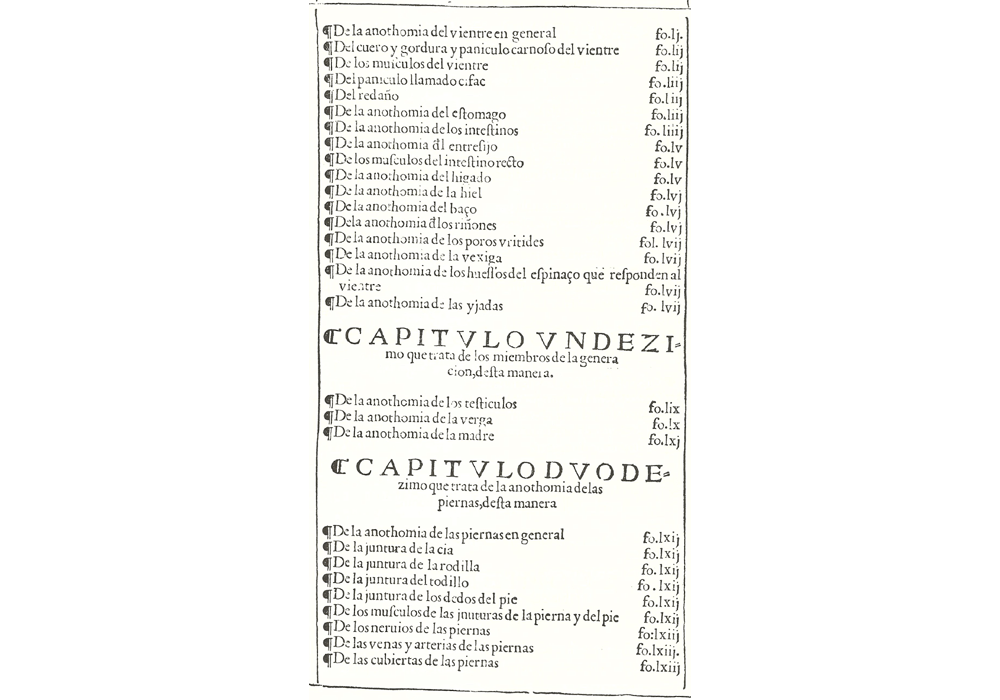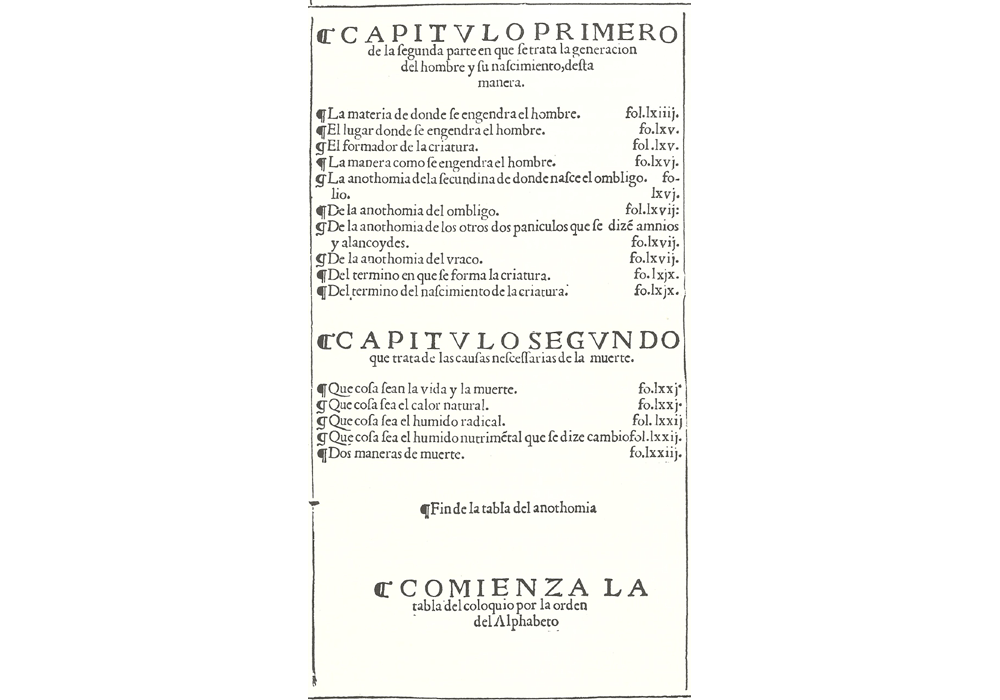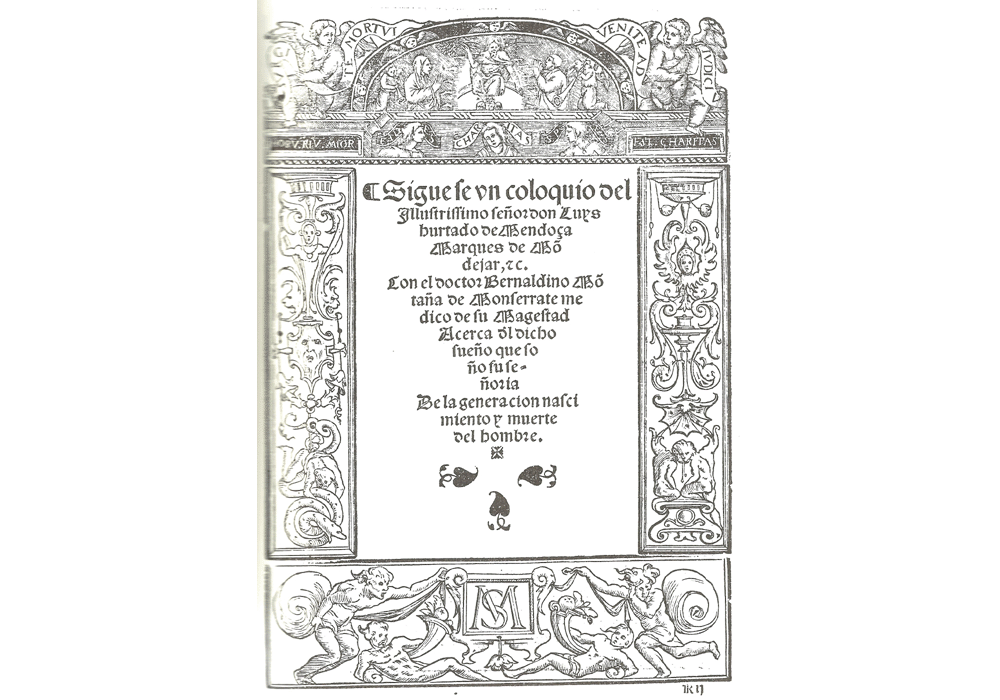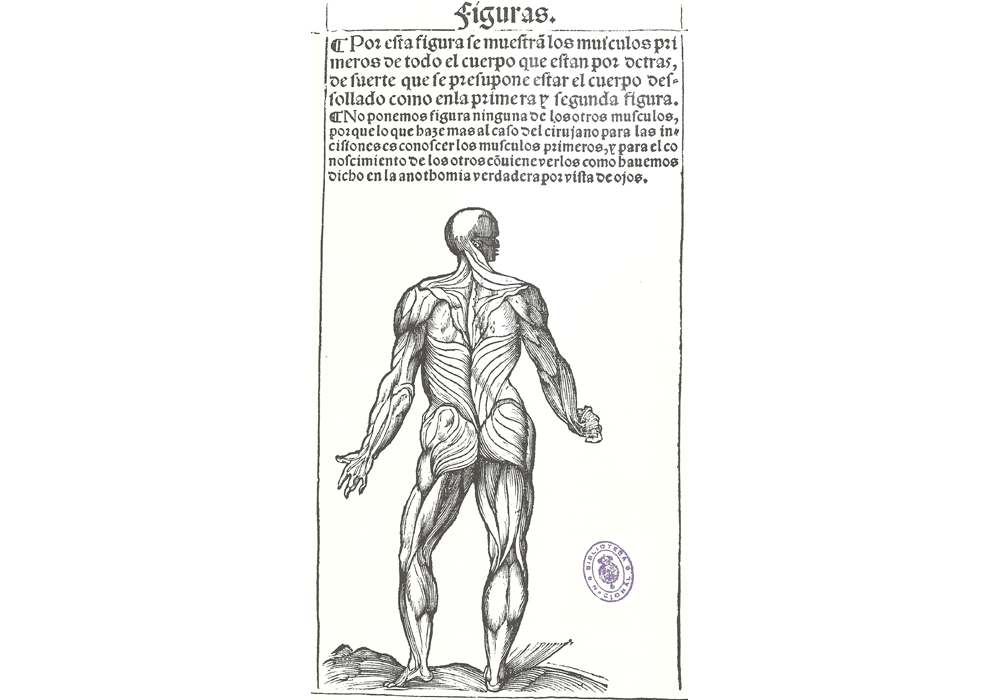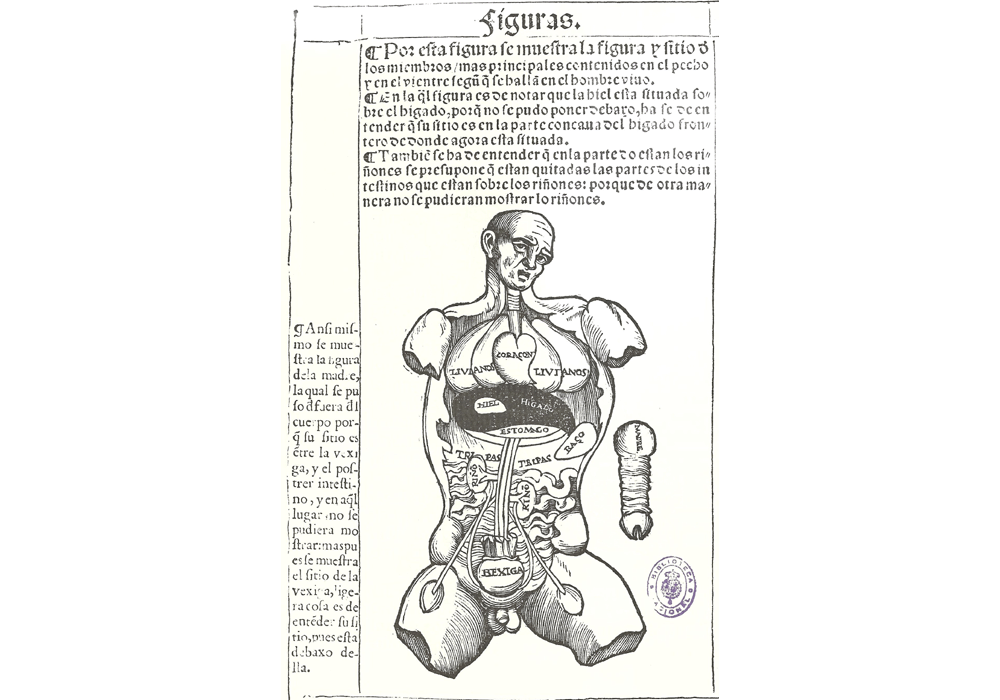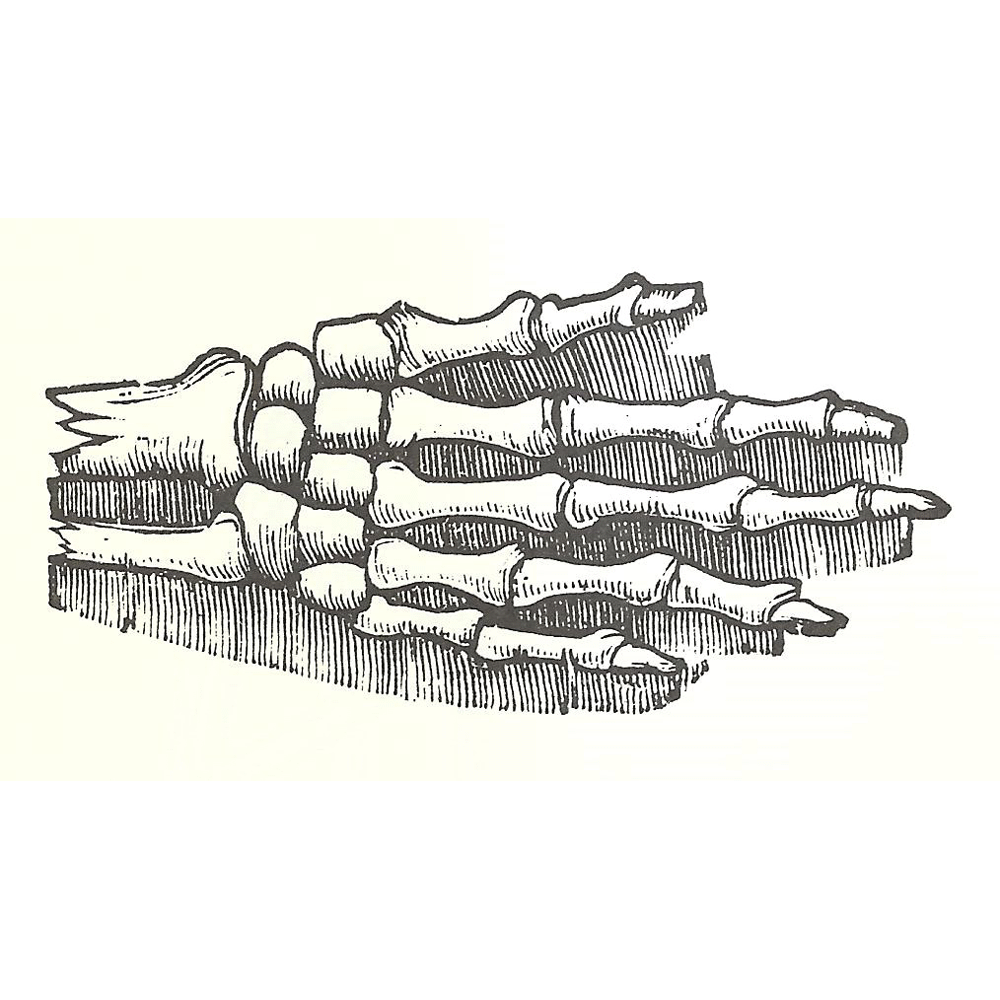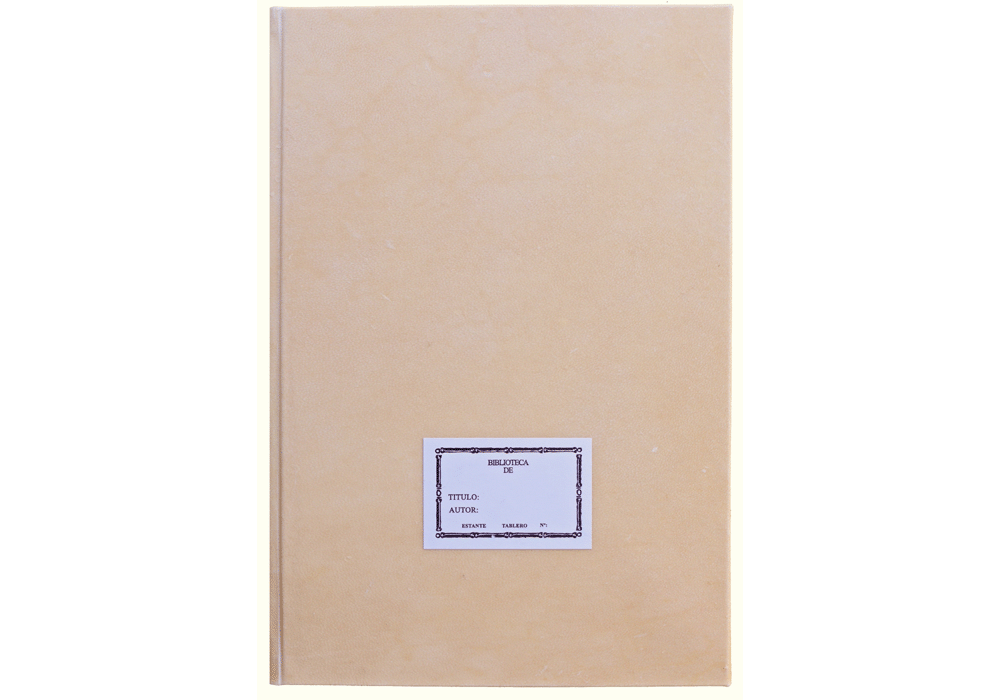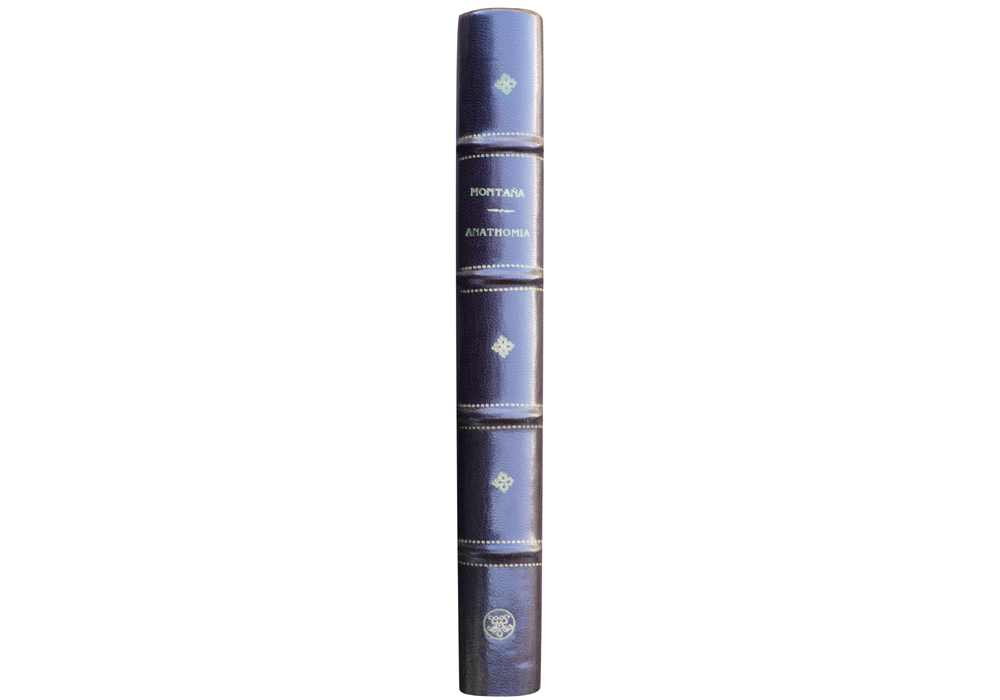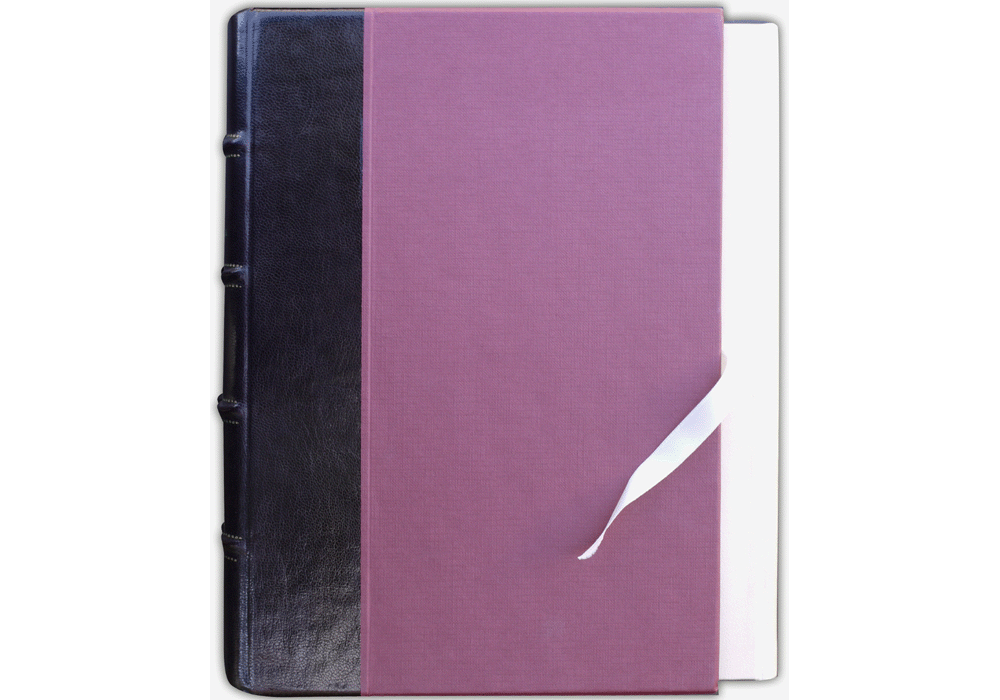|
|
|
| Seguir @vicentgarciaedi Twittear |
|
vgesa |

|
|
|
Synopsis: The author of this work was Carlos V's doctor and was also a teacher in the Universidad de Valladolid: Bernardino Montaña de Monserrate. On the title page, double ink, after the title and the author, it is insisted: “Muy vtil y necessario a los medicos y cirujanos que quieren ser perfectos en su arte, y apazible a los otros hombres discretos que huelgan de saber los secretos de naturaleza” (very useful and necessary for doctors and surgeons who want to be perfect in their art and good to other discreet men who don't know about Nature's secrets). It continues describing the content: “En el qual libro se trata de la fabrica y compostura del hombre, y de la manera corno se engendra y nasce, y de las causas porque necessariamente muere. Juntamente con vna declaracion de vn sueño que soño el Ilustrísimo señor don Luis Hurtado de Mendoça Marques de Mondejar... El qual sueño, debaxo de vna figura muy graciosa, trata brevemente la dicha fábrica del hombre...” (this book is about how a man is created, the way he is conceived and is born and the reasons why necessarily he dies, and about a dream of don Luis Hurtado de Mendoça, Marqués de Mondéjar). The book is a real handbook: it uses gothic typescript for the main text and roman typescript for the other text, apostilles and preliminary pages. It offers thirteen xylographic prints: three are dedicated to the muscular system, two to the blood system, two to the nervous system, one to the seminal vessels, one to the situation of viscous, and four to the bones, two of the prints show the bones on the hand. This copy was part of the 1985 exhibition “Tesoros de España: Ten Centurias of Spanish Books”, from a linguistic point of view, the interest of this book was shown on the catalogue, 'because it is part of the great work that Spanish Renaissance investigators put themselves to the task of boosting the use of Castilian as a scientific language as opposed to the systematic use of Latin for all the study projects'. It was a special part of the exhibition "Science through the ages" the following year being held in Oxford's Divinity School.
|
IBIC Rating: |
||
|
AC History of art / art & design styles |
1D Europe
|
|



